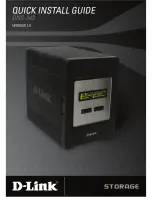
Glossary
RF300E/RF310E
191
M
Management Information Base (MIB): A database of network management information used by the Common
Management Information Protocol (CMIP) and the Simple Network Management Protocol (SNMP).
Megacom: An AT&T service with a normal WATS line (typically T1) between the customer premise and the AT&T serving
class 4 CO are the customer’s responibility.
MegaLink: BellSouth’s leased T1 service.
Message: Associated with such terms as packet, frame, and segment. 1. In information theory, an ordered series of
characters intended to convey information. 2. An assembly of characters and sometimes control codes that is transferred as
an entry from an originator to one or more recipients.
Modem: A communications device that enables a computer to transmit information over a phone line. It converts the
computer’s digital signals into analog signals to send over a phone line and converts them back to digital signals at the
receiving end. Modems can be internal and fit into an expansion slot, or external and connect to a serial port.
Multiplexer (Mux): 1. A device that takes several input signals and combines them into a single output signal in such a
manner that each of the input signals can be recovered. 2. A device capable of interleaving the events of two or more
activities or capable of distributing the events of an interleaved sequence to the respective activities. 3. Putting multiple
signals on a single channel.
Multiprotocol: A device that can interoperate with devices utilizing different network protocols.
RASFinder: A secure gateway that provides multiple LAN users with high performance Internet access by functioning as a
TCP/IP RASFinder that resides on the outer edge of a firewall.
Multithreading: The ability of a software system to be able to handle more than one transaction concurrently. This is
contrasted to the case where a single transaction is accepted and completely processed befor the next transaction
processing is started.
N
Nailed Connection: A permanent or dedicated circuit of a previously switched circuit or circuits.
Nailed-up Circuit: A semi-permanent circuit established through a circuit-switching facility for point-to-point connectivity.
NAK (Negative Acknowledgment): Communications code used to indicate that a message was not properly received, or
that a terminal does not wish to transmit. Contrast with ACK.
Network: A group of computers connected by cables or other means and using software that enables them to share
equipment, such as printers and disk drives to exchange information.
Node: Any point within a network which has been assigned an address.
O
Object-Oriented: A method for structuring programs as hierarchically organized classes describing the data and operations
of objects that may interact with other objects.
Office Channel Unit - Data Port (OCU-DP): The CO channel bank used as the interface between the customer’s DSU and
the channel bank.
Off-hook: The condition of a device which has accessed a phone line (with or without using the line). In modem use, this is
equivalent to a phone handset being picked up. Dialing and transmission are allowed, but incoming calls are not answered.
Contrast “on-hook”.
Off Premise Extension (OPX): An extension or phone that terminates in a location other than that of the PBX. Commonly
used to provide a corporate member with an extension of the PBX at home.
Ones Density: the measure of the number of logical 1s on a T1 line compared to a given total number of bits on that line;
used for timing information in data recovery in AMI and B8ZS.
On-Hook: The condition of a device which has not accessed a phone line. In modem use, this is equivalent to a telephone
handset that has not been picked up. In other words, it can receive an incoming call. Contrast “off-hook”.
Open Shortest Path First (OSPF): A hierarchical Interior Gateway Protocol (IGP) routing algorithm for IP that is a
proposed standard for the Internet. OSPF incorporates least-cost routing, equal-cost routing, and load balancing.
Outage: The measure of the time during which a circuit is not available for use due to service interrupt. Outage is the
complement of circuit “availability” (100% minus % available = % outage).
Out-of-band: Signaling that is separated from the channel carrying the information (e.g., the voice/data/video signal is
separate from the carrier signal). Dialing and various other “supervisory” signals are included in the signaling element.
Contrast “In-band” signaling.
Summary of Contents for RASFinder RF300E
Page 5: ...Remote Access Device Chapter 1 Introduction and Description ...
Page 11: ...Remote Access Device Chapter 2 Installation ...
Page 14: ...RASFinder RF300E RF310E User Guide RF300E RF310E 14 ...
Page 15: ...Remote Access Device Chapter 3 Software Loading and Configuration ...
Page 35: ...Remote Access Device Chapter 4 RASFinder Software ...
Page 72: ...RASFinder RF300E RF310E User Guide RF300E RF310E 72 ...
Page 73: ...Remote Access Device Chapter 5 Client Setup ...
Page 90: ...RASFinder RF300E RF310E User Guide RF300E RF310E 90 ...
Page 91: ...Remote Access Device Chapter 6 RAS Dial Out Redirector ...
Page 99: ...Remote Access Device Chapter 7 Remote Configuration and Management ...
Page 108: ...RASFinder RF300E RF310E User Guide RF300E RF310E 108 ...
Page 109: ...Remote Access Device Chapter 8 Service Warranty and Tech Support ...
Page 113: ...Remote Access Device Appendixes ...









































